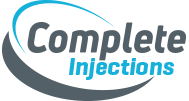Tendinopathy
Tendinopathy accounts for approximately 30% of all consultations in physiotherapy clinic and so makes up a significant portion of our patients at Complete Physio in London (Andre & Murrell, 2008; McGonagle et al, 2003).
The treatment of tendinopathies of both the upper and lower limb can be a frustrating journey for patients and a challenging area for clinicians. Ideally, we want to avoid injections and surgery and utilise non-invasive treatments such as exercise and shockwave therapy.
At Complete we are at the forefront of the diagnosis and management of tendon complaints. Our expert physiotherapists are highly experienced in the management of all types of tendinopathies. We use evidence-based treatment techniques to get to the root cause of your problem, to ensure you get back to your sport as soon as possible.
A recent treatment option that has been gaining momentum, which we have been using successfully at Complete, is topical GTN Glycerol Trinitrate (also known as nitroglycerin) delivered in the form of patches. It has been investigated in a few systematic reviews and showed positive outcomes for tendon pain. The most recent was in the British Journal of Sports Medicine (BJSM) where GTN patches were shown to reduce both upper limb and lower limb tendon pain (Challoumas et al, 2019).
GTN patches are placed on the area of pain in the form of a small patch (see image below) allowing the GTN to be absorbed slowly through the skin and into the tendon. GTN causes the blood vessels in the area to dilate (become more open) and encourages tendon to heal. Traditionally, GTN was used for the treatment of angina (heart pain) which occurs in heart disease. GTN patches have been shown to be a safe and effective treatment modality for tendon pain when used as part of a physiotherapy rehabilitation programme (Challoumas et al, 2019).

Figure A – A 5mg GTN patch
Figure B – The patch is placed at the maximal point of pain as shown in this patient with tennis elbow
A 5-mg/24-hour glyceryl trinitrate patch is cut into quarters and (B) placed over the area of maximal tenderness/pain as shown in a patient with lateral epicondylitis. The patch is left in place for 24 hours and then replaced with a new quarter patch (Andre & Murrell, 2008)
Do GTN patches help all tendon complaints?
GTN patches are not used in the treatment of all tendon pain. At Complete we have found it to be be effective for the more superficial tendons such as:
Achilles tendinopathy has been the most widely investigated and it has been shown that GTN patches resulted in a significant improvement in both, pain and function (Hunte & Lloyd-Smith, 2005.)
How does a GTN patch improve your tendon pain?
The exact mechanism for the improvements observed in those with tendon pain is not yet fully understood. There are a significant number of studies ongoing in the UK and abroad that will hopefully assist us in answering this question.
The key mechanism appears to be related to nitric oxide (NO). The patch causes opening of the blood vessels under the skin and increases the amount of the hormone nitric oxide. Nitric oxide is a free radical produced by a family of enzymes, the nitric oxide synthases (NOS). It has been shown that nitric oxide is involved in the healing of both acute and chronic tendon injuries and is likely to play a key role in collagen synthesis (Murrell, 2007).
“Topical Glycerol Trinitrate (GTN) patches are a safe, effective treatment for chronic tendinopathy” Challoumas et al, 2019
How do you use GTN patches?
We recommend the Deponit patches because it uses a ‘matrix’ patch, so it does not leak when you cut it.
Before application you should ensure you have been appropriately screened by a health care professional to ensure it is safe for you to use GTN patches. There are potential side effects that you must be made aware of before embarking on this treatment.
We suggest you use the patches for a least four weeks to start with. We may consider continuing the use of the patches if you think they are working, or increase the dose by not cutting the patch.
The patch should be left on will be on when you exercise or play sport. It should stay on when you take a bath or shower – you can reinforce the patch with tape or a plaster.
How will you know if it is helping and how long does it take to work?
From experience most patients get some pain relief at 2 weeks. However, the studies show it can take up to 4 weeks (Challoumas et al., 2019).
If there is no improvement at 4 weeks, you are unlikely to gain benefit from the patches and they should be stopped. If the patches are helping, they can be used for a longer period of time.
Are there any side effects you should be aware of?
Like all medications there are potential side effects that you must be aware of. The most common side effect of GTN patches is a headache and/or rash. Approximately 20% of patient may experience a headache or skin irritation/rash. Your health care professional will provide specific advise on how to use the GTN patches and how to minimise these side effects.
Can you use GTN patches alongside other treatment modalities?
Yes, we would always advise and encouraged that GTN patches are used in combination with other treatment techniques such as a slow heavy resistance programme and shockwave therapy.

So, what next?
It is essential that before embarking on any treatment that you have a full and comprehensive assessment to determine the diagnosis. This may require having a diagnostic ultrasound scan. Ultrasound scans are excellent at diagnosing most tendon complaints for example the Achilles tendon. At Complete we carry out a scan with no extra cost and will provide a comprehensive report.
If you have a tendon issue that is not improving and you would like to discuss with one of our experts if GTN patches may help you, then please email info@complete-physio.co.uk.


